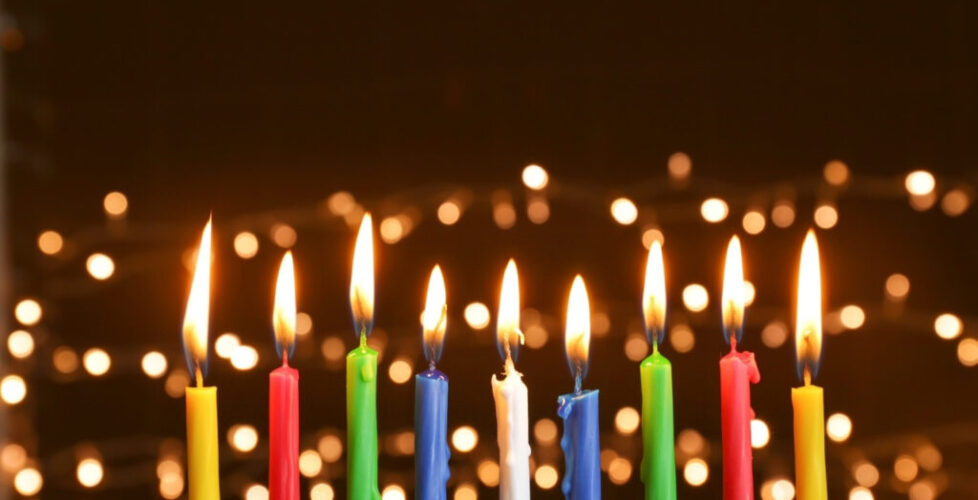Rabbi Birnholz December 2020 Scroll article
Last week, in the car on an errand, I was listening to NPR. In an interview of ATUL GAWANDE, one of the folks on President Elect Joe Biden’s Pandemic Response counsel declared: “This week we learned about the results of the Pfizer vaccine and its likely great effectiveness. That puts a light at the end of the tunnel. We see the light at the end of the tunnel. Now we need to pull together to get our country through that tunnel, saving all the lives and jobs that we can.” 1
While Gawande was talking about life in our country (and world) during this pandemic, it was not a huge leap for me to hear his words and think Hanukah. This same push/pull is central to our experience of this festival of Light. Most of us know that we start with one kindled light (along with the Shammash/helper) and add a kindled light each night until we have 8 lights on the eighth night. What many don’t realize is that there is considerable debate about this, and who is lighting how many lights on what night.
The Babylonian Talmud (Shabbat 21b) features the discussions between our sages Shammai and Hillel.
Beit Shammai says: On the first day, one kindles eight lights, and from there on, gradually decreases the number of lights until on the last day of Hanukkah, they kindle one light.
And Beit Hillel says: On the first day, one kindles one light, and from there on, gradually increases the number of lights, until on the last day, they kindle eight lights.
Shammai is linking the Hanukah lights to the sacrifices on Sukkot which decrease the number of animals offered each day,
The reason for Beit Hillel’s opinion is that the number of lights is based on the principle:
One elevates to a higher level in matters of sanctity and one does not downgrade. Therefore, if the objective is to have the number of lights correspond to the number of days, there is no alternative to increasing their number with the passing of each day.
(for the full debate with others weighing in and other ways of kindling Hanukah light see 2)
I have always heard the explanation that Hillel wants us to increase the light. We make the world holier, more full of shalom, by bringing more light. I have always been intrigued that it isn’t just increasing the light (physically or spiritually). We are actually increasing the light during a period of time when the light outside first diminishes, and then starts to return. Hanukah starts on the 25th of the month of Kislev. As the month closes, the moon wanes until it becomes a new moon (not visible) on the 5th day of Hanukah. This darkness is increased because it falls close to the Winter Solstice – the shortest day of the year. So as we approach the new moon closest to the Winter Solstice, we are increasing the light. We finish Hanukah, with a fully kindled Hanukiyah, blazing with light, as the moon reappears in the sky, giving us hope and strength to persevere through that dark time.
Even as we observe Hanukah this year, I will have Gawande words in my heart and head. What do I/we need to do to help ourselves, our family, our community, our country, our world, pull through this dark and troubled time? Like Hanukah, we know the new month is coming and we sense, for the first time in a while, that there is light at the end of the tunnel. We all have opportunities to add to and increase the light by not just looking for the light, but finding ways, little and big, every day and extraordinary. Be sources of light, to lift our own spirits and those of all who cross our path.
Happy Hanukah
From,
Rabbi Birnholz & the Birnholz Family
1 https://www.npr.org/2020/11/13/934718042/member-of-bidens-coronavirus-advisory-board-on-what-could-be-done-to-fight-pande
2 https://www.sefaria.org/sheets/89557?lang=bi


Donate
Directions